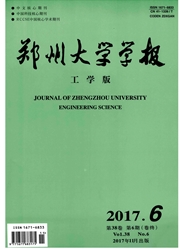

 中文摘要:
中文摘要:
基于电视频带的认知网络中主用户为随机出现的无线麦克等设备,其随机行为使得可用频谱离散化,产生许多小于用户需求的频谱碎片.将主用户行为建模为Markov过程,定义频谱占用度、碎片度及统计平均中断概率来分析其行为对系统性能的影响,并提出两种接入策略,策略一加入调整因子并优先选取较少连续信道,策略二基于k-agile接收机,考虑保护带及灵敏度约束,以最小碎片数为目标,非连续地接入频谱,在物理层解决碎片问题,仿真证明二者性能均优于已有策略.
 英文摘要:
英文摘要:
The unused TV bands are discretized by the behaviors of the random presence of the incumbents,considered as primary users in the cognitive radio network. The spectrum discreteness is ignored by most of the existing strategies,resulting in a mass of spectrum fragments that cannot afford the user's demand. In the paper,the primary users are modeled as a Markov process,and the spectrum occupancy degree,fragments degree and the statistical average outage probability are defined to analyze the impact of the primary users on system performance. And two strategies are proposed in this paper. The first strategy involves adjustment factor and selects the fewer continuous channels. The second strategy based on the k-agile receiver involves the constraint of agility and guard bands,and selects the minimum non-contiguous fragments to solve the fragments problem in the physical layer. The simulations show that both strategies are superior to the existing strategies.
 同期刊论文项目
同期刊论文项目
 同项目期刊论文
同项目期刊论文
 期刊信息
期刊信息
